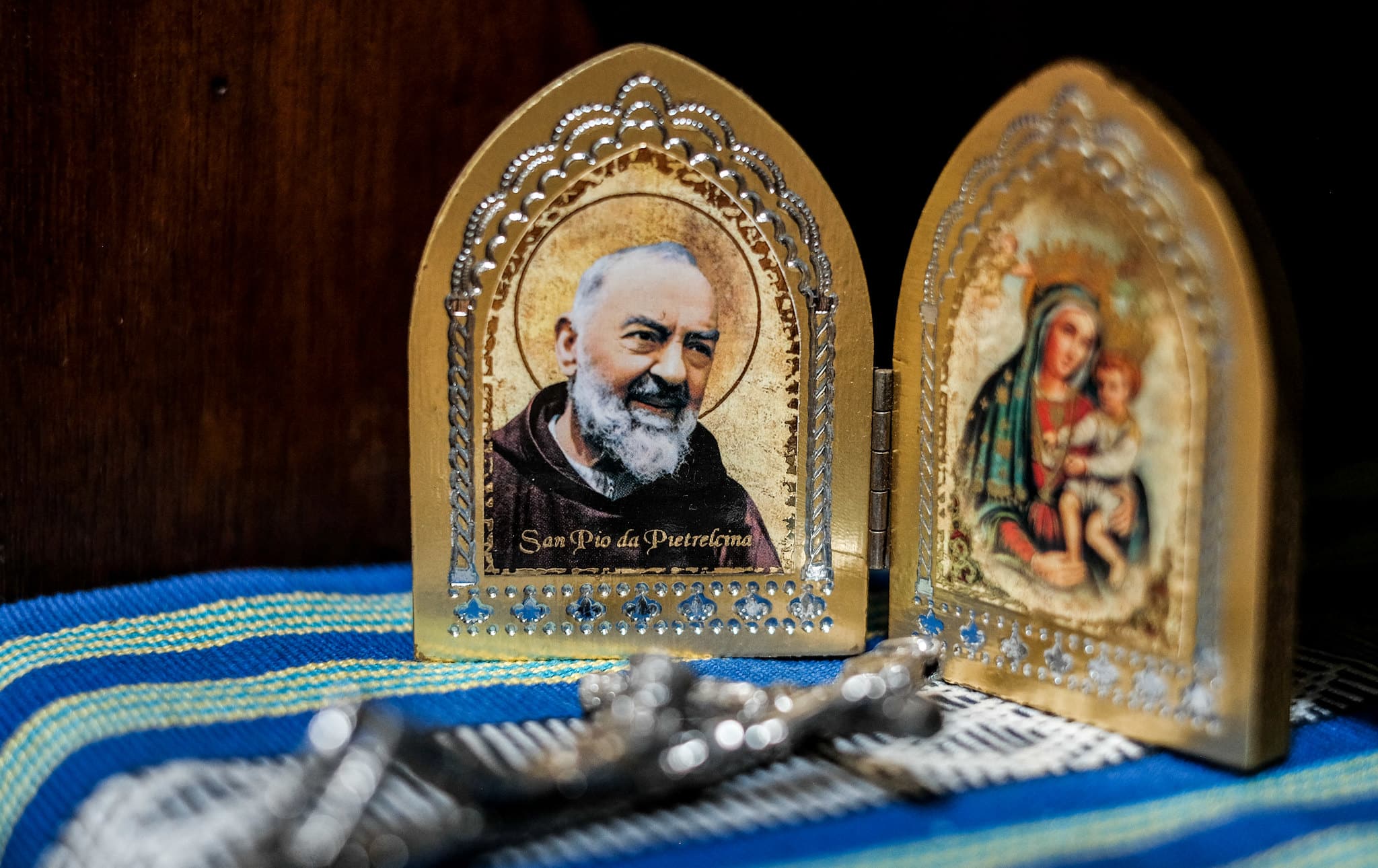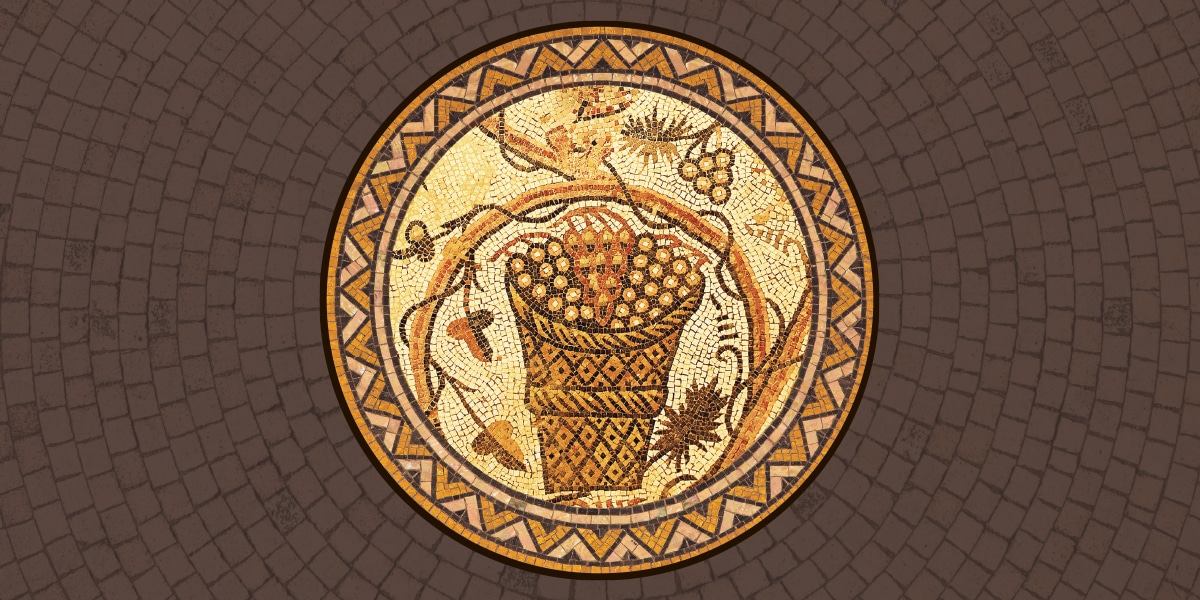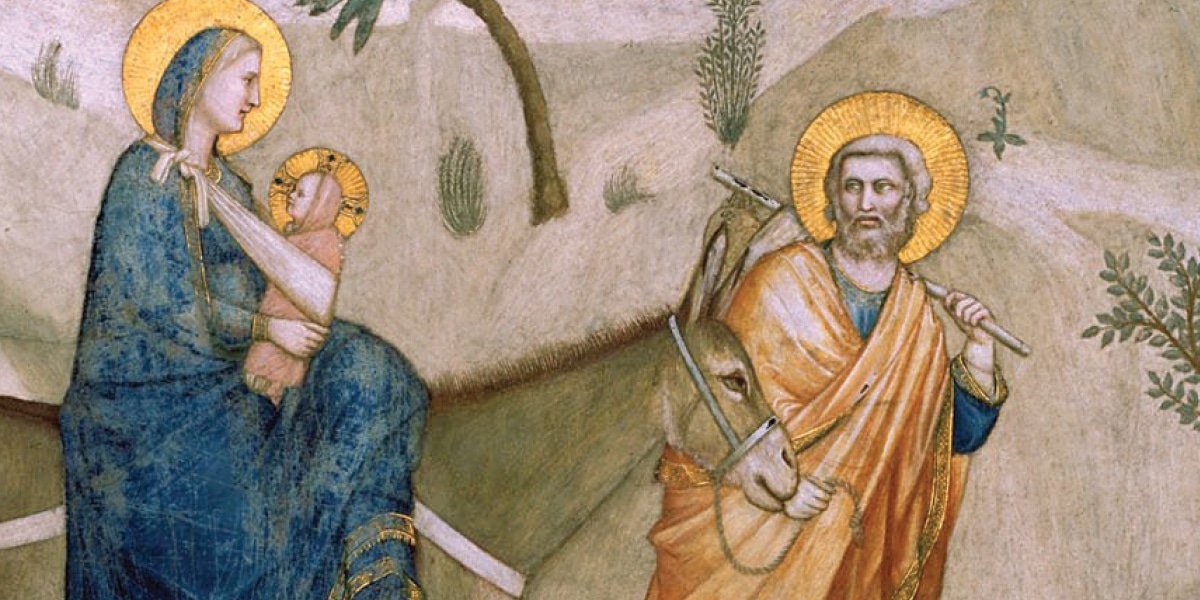Image by Bro. Jeffrey Pioquinto, SJ/flickr
Padre Pio nurtured his love for the Mother of Jesus from the time he was a child. He would go to the church in Pietrelcina to greet and to pray to Our Lady of Graces.
He always kept a little picture of this Madonna hanging on the wall of his cell. He would glance up at her with gratitude before eating his meager meals, before going to rest, and each time he returned to his cell weary and fatigued after hearing confessions. He was to look up at his little Mother with immense tenderness before closing his eyes in death.
Padre Pio’s love for the Madonna was that of a friend who has faith, who believes and hopes. It was not just sentimental piety expressed in beautiful phrases, sighs, and sobs! His love for the Mother of God was the result of constant meditation, which had become his way of life. Padre Pio contemplated Mary within God’s plan for the salvation of mankind. By being close to her, he felt closer to Jesus. On May 6, 1913, Padre Pio wrote to Fr. Agostino of San Marco in Lamis: “This most tender Mother in her great mercy, wisdom, and goodness, has punished me in a most exalted manner, by pouring so many great graces into my heart that when I am in her presence, or that of Jesus, I am compelled to exclaim, Where am I? Who is near me? I am all aflame. I feel myself held fast and bound to the Son by means of His Mother.”
His love became an endless, ardent, faithful prayer. Who could possibly count the rosaries that he recited over the course of his marvelous life? He was the Friar of the Rosary. He always carried it in his hand or on his arm as if it were a bracelet or a shield. He had other rosaries under the pillow of his bed, on the bureau in his cell. He called the rosary his weapon. One night when he was sick in bed, he was unable to find his rosary beads, so he called Fr. Onorato of San Giovanni Rotondo, saying, “Young man, get me my weapon; give me my weapon.”
The rosary was his favorite prayer; he recited it continually. He devoured the rosary with insatiable hunger. It was the prayer that he had learned from the Virgin herself: the Virgin of Pompeii, Lourdes, and Fatima, as a means of obtaining the conversion and salvation of sinners.
At certain hours, he would walk down the center path of the friary garden, absorbed in his suffering and in his love, while the beads slipped through the fingers of his wounded hands. In his pockets he carried rosary beads, which he would give to anyone who requested a set. Even today, people still hold these dear, saying, “This is a rosary which Padre Pio gave me; I treasure it with all my heart!”
When the friary bell rang and he was able to recite the Angelus, either in the garden, or in church, or at his window, how passionate his voice was! Standing at the altar, reading the Visit to Mary Most Holy, he was rarely able to control his emotions.
He was deeply moved when Beniamino Gigli sang Gounod’s “Ave Maria” for him in the friary garden. He had a weakness for these famous singers; he listened to them with pleasure, and always requested them to sing either a prayer to the Madonna or a Neapolitan song. He was so attentive, and so fascinated, that it was as though he was enjoying a bit of paradise.
Many times he would get up in the wee hours of the night to open the window of his cell because someone outside alone was singing either Shubert’s “Ave Maria” or Gounod’s “Ave Maria” in his honor. He would be enraptured, and at the end he would applaud and shout, “Bravo, bravo…may the Madonna protect and bless you, my son.”
In 1959, the pilgrim statue of Our Lady of Fatima was leaving Cova da Iria, Portugal, in a helicopter to tour the major provinces of Italy, and Padre Pio awaited the coming of the statue of his beloved Madonna. However, at the time, the Padre was suffering from a serious case of pleurisy, which lasted quite some time and had prevented his celebrating Mass since the fifth of May. His inability to celebrate Mass and to hear confessions caused him so much suffering that he anxiously awaited the arrival of Our Lady of Fatima.
Every night from March 31, he would utter a spiritual thought into a microphone, which was connected to the loudspeaker. Thus, he could be heard by all the faithful who were gathered in the church. On the evening of August 4 he announced: “We have but a few hours for our Mother’s visit. Let us not be found empty-handed!” On the evening of August 5, he announced with a voice full of emotion: “In a few minutes our Mother will be in our home…let us open our hearts.”
On the morning of August 6, throngs of people were in the church. The Padre, too, attended, accompanied by his fellow priests. Exhausted, he had to sit down, and remained a long time in front of the image of the Madonna. When the little statue was placed before him for him to kiss, he placed in her hands the rosary that had been a gift from the prayer group of San Casciano in Val di Pesa. That affectionate and touching gesture brought tears to the eyes of all who were present.
When, at last, the helicopter rose from the terrace of the Home for the Relief of Suffering, among the eyes that followed it were his, wet with tears.… He called her by name: “Beautiful little Mother, I have been sick during your visit to Italy; now you are leaving without curing me!” He would have preferred to die rather than remain unable to celebrate Mass and hear confessions. But the moment he lamented her departure, Padre Pio felt a chill through his body. He exclaimed to his fellow priests: “I am cured!”
And so he was. This became known to everyone. Fr. Francesco Napolitano, who had been present at that scene, said that Padre Pio never felt so healthy and strong as he did after the departure of the statue of Our Lady of Fatima. Certain insinuations of the press were addressed when Padre Pio, with his usual childlike simplicity, said to his spiritual director, Fr. Agostino of San Marco in Lamis, “The Madonna came because she wanted to cure Padre Pio!”
For the stigmatist of the Gargano, love for the Madonna meant perpetual imitation of her. If Jesus is the way and the light that leads to the Father, Mary is the way and the light which leads to Jesus. With Mary’s help, and by imitating her virtues, Padre Pio drew ever closer to Jesus, so very close as to be transformed into him.
His imitation of Mary meant, most importantly, imitation of her humility. For him, that humility was a constant interior torment, a slow and painful agony, the anguish of not knowing whether he was corresponding to divine grace. You could read that deep humility on his face even when he was surrounded by clamorous crowds who believed in him, who trusted in his prayers and expected so many miracles from him every day. He always remained collected. His humility made it possible for him to be serene and dignified as he silently accepted mortification, slander, quarrels, humiliation, and sorrow.
For him, love of the Madonna signified perpetual mortification. He implored his spiritual director to allow him to make a vow of abstinence from fruit on Wednesdays; he also asked him to suggest a means of pleasing the Blessed Mother in all things at all times. Love of the Madonna animated Padre Pio, and inspired him all the more to become an apostle. “I should like to have a voice strong enough to invite all the sinners of the world to love the Madonna.” God heard this sigh of love: He was given a voice that could be heard even when he was silent. It was a voice that touched the depths of people’s hearts and that penetrated their consciences, a voice that tormented and shook those who were dormant. It was a voice that was as terrible as the crashing of thunder in the night, yet as sweet as a caress. It was a voice that was threatening yet inviting, a voice that annihilated yet restored, that consoled and pardoned.
To all those who recommended themselves to his prayers, Padre Pio would say: “Love the Madonna. Recite the rosary.” One day, his guardian asked him how many rosaries he recited daily. Padre Pio answered, “Well, I have to tell my Guardian the truth; I have recited thirty-four!” For him, the rosary was a perpetual meditation on the profound mysteries of Calvary, on Jesus’s plan of salvation, on his sorrowful Mother. Padre Pio was fascinated by the Hail Mary.
Padre Pio was deeply devoted to Our Lady of Pompeii. He never failed to pay her a visit whenever he had the opportunity to go to Pompeii. He went to this mystical sanctuary for the first time in 1901, when he was fourteen years old, accompanied by his teacher and seven schoolmates. As a soldier, during his military service at Naples, he never failed to run down to Pompeii from time to time, to say “hello” to his “beautiful Virgin.”
A few days before his death, on the eve of the fiftieth anniversary of his stigmata, he was offered a bouquet of roses. He was deeply touched, and with a slight gesture toward his picture of the Virgin Mother, he took a rose and asked one of his spiritual children to take it to Pompeii and place it in front of the image of the Madonna.
“That rose,” wrote Fr. Gerardo di Flumeri, “did not wilt; it remained beautiful, fresh, and fragrant until the day of the Padre’s death; then it closed and became a bud again.” That rose is the symbol of the venerated Padre’s love for the “beautiful Virgin,” his beloved “Mother of Pompeii.”








